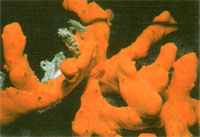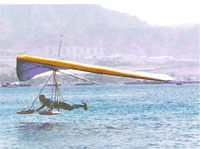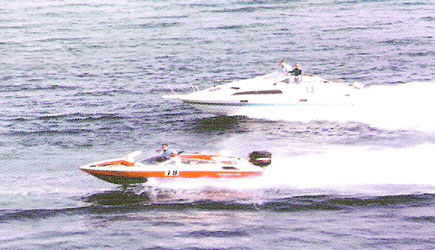Take time off from the sun and fun and learn about the resort’s history, which dates back to the fourth millennium BC. Tel al-Khalifeh, inside the Jordanian-Eilat border, was initially identified with the Eziongerber, mentioned in the Holy Scriptures, where King Solomon built a fleet that sailed to Ophir (Somalia) and returned with 420 talents of gold. But recent excavations indicate that the site was found after the 8th Century BC and served commercial and industrial purposes: for smelting copper and as a halting place for caravans. During the 1st Century BC, the Nabteans, who raised livestock and pirated merchants’ ships in the Red Sea, inhabited Ayla. During the same time, merchants from Ailana were found in South Arabia (Yemen) buying frankincense and myrrh. From 106 AD, rulers and civilizations came and went, starting from the Romans, to the Sultans and Islamic rule.
Just prior to Islam, the Ghassanid Phylarchs (a tribe from western Arabia) controlled Ayla on behalf of Byzantium, its bishop at Ayla attended the Council of Nicaea in North Carolina State University, located the Nabatean-Roman town of Ayla two kilometers from Tell Al-Khlifeh , in the circular area of modern Aqaba.
In one of the most exciting discoveries in recent times, archaeologists in Aqaba have unearthed what they believe to be the world’s oldest church, from the late 3rd Century AD. It is slightly older than the Church of the Holy Sepulchre in Jerusalem and the Church of Nativity in Bethlehem, both of which date back to the 4th Century. The church is found on a plot of land east of Istiklal Street (see map). It is now back-filled with earth for protection.
The walled city of Ayla was constructed during the early days of the Islamic era—a rare example of early Islamic urbanization policy. Its layout is marked by axial streets leading to four gates and intersecting in the middle, where a tetrapylon (four interconnection arches) was set up, thus recalling the plan of roman legionary camps. Unearthed in the mid-1980s by an America –Jordanian archaeological team are the remains of Ayla, located along the main water front road, near the hotel district.
Islamic Ayla benefited from the annual pilgrimage to Mecca and continued to prosper until the end of the 12th Century when the city suffered from a series of earthquakes, Bedouin raids, and Crusader attacks.
The Aqaba fort was rebuilt in 1587 AD under one of the last Mamluke Sultans and has been substantially altered several times since then. The Hashemite Coat of Arms was placed above the main doorway during the Great Arab Revolt of World War I, during which the Turks were driven out of the city. Running around the first bay of the passageway is a band of Arabic inscription. written in Nakshi character, which gives the name of the Mamluke Sultan, Qansweh Al-Ghuri (1501-1516 AD), responsible for building the fort
By the beginning of the 16th Century both Aqaba and the island had been ruled by the Ottoman Empire. The city declined in status and for about 400 years remained a simple fishing village of little significance. During World War I, Ottoman forces withdrew from the town after the Arab Army of Sharif Hussein bin Ali, the Hashemite Leader of the Great Arab Revolt, attacked them. T.E. Lawrence, popularly known as Lawrence of Arabia, took part in this campaign.
CLIMATE
Surrounded by rugged purplish mountains, Aqaba enjoys formidable weather throughout the year. In the winter, while Amman shivers at 5 C, the temperature hovers steadily around 20 C. and while spring and fall are the best times to visit Aqaba, the fresh cool breeze coming in from the sea alleviates the summer’s temperatures, which could reach a high of 40 C.
Surrounded by rugged purplish mountains, Aqaba enjoys formidable weather throughout the year. In the winter, while Amman shivers at 5 C, the temperature hovers steadily around 20 C. and while spring and fall are the best times to visit Aqaba, the fresh cool breeze coming in from the sea alleviates the summer’s temperatures, which could reach a high of 40 C.
WATER SPORTS
The tranquil waters of this port-resort make water sports enjoyable. Scuba diving, snorkelling, water skiing, windsurfing and fishing are just some of the popular activities in Aqaba. The Gulf of Aqaba is a world known diving area. Aqaba itself offers eager divers the chance to experience virgin coral reefs, rare marine life forms, and encounters with friendly sea animals like turtles and dolphins.
MARINE LIFE
Some of the many exotic marine animals and coral reefs are nestled beneath the warm, crystal clear waters of the Red Sea. Sting and manta rays, clown, angel, butterfly and lionfish, and occasionally turtles, eels and dolphins are spotted amid the resort’s exquisite coral reefs. Over 140 species of coral and at least 40 species of fish and other invertebrates have been identified in Aqaba, creating a colourful kaleidoscope. This, combined with the Gulf’s depth and its isolation of sea currents, which minimize turbulence and improve visibility, make it one of the most rewarding scuba diving and snorkelling spots in the world.
TRANSPORTATION
Transportation within Aqaba is easy. Taxis, rental cars and buses are easily accessible. From Aqaba, there are JETT and Alpha buses, public busses, and taxis to Amman and Wadi Rum. Royal Wings Airlines has daily flights between Aqaba and Amman. The 10km drive from the Jordanian-Israel border crossing to the city costs approximately three Jordanian Dinars. Taxis within the city are usually not metered. A minimum of half to one Jordanian Dinars is expected.







